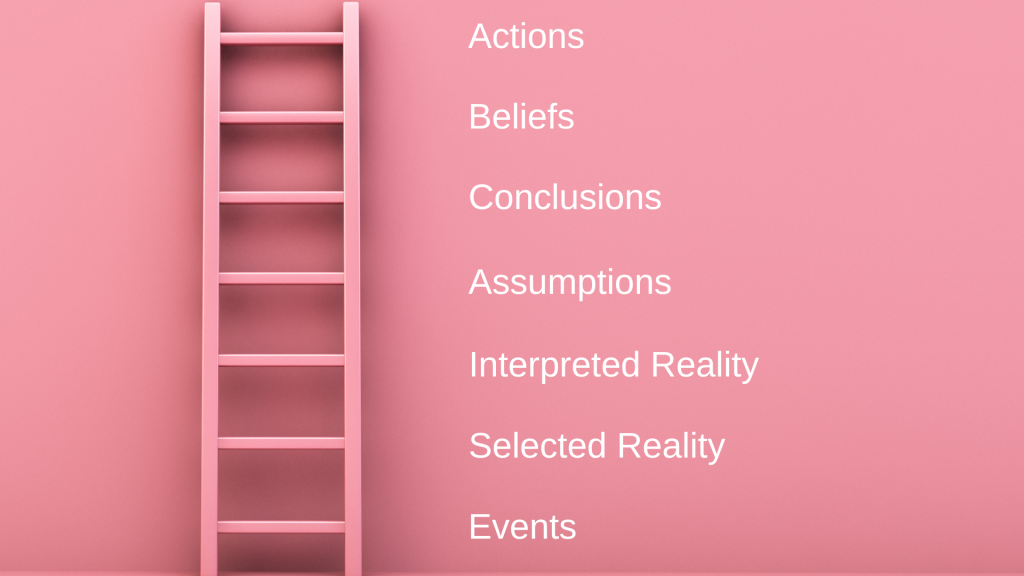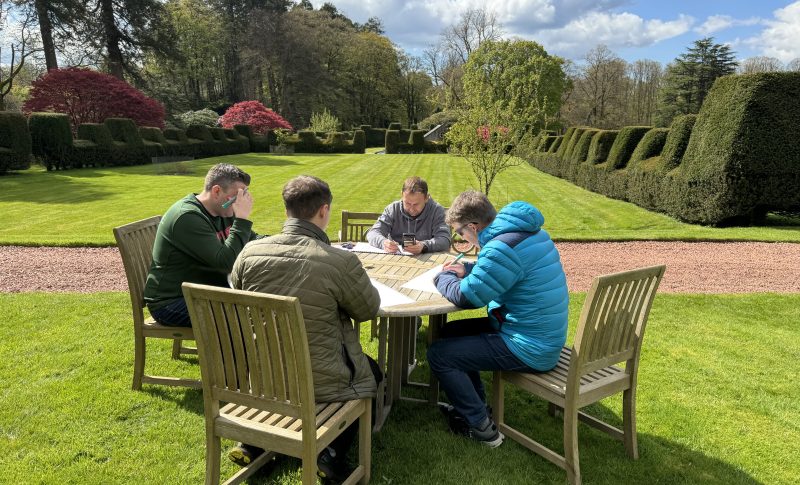Jumping to conclusions
Have you noticed how easy it is to jump to a wrong conclusion!? You are convinced you are “right”. Yet others are convinced they are “right” too!
The Ladder of Inference (after Argyris, C., ‘Overcoming Organisational Defences: Facilitating Organisational Learning’) provides a way of visualising how you go from experiencing an event to making a decision.
It reinforces the value of self-awareness around how we experience the world and the assumptions and biases in play. A note of caution, however. Models don’t claim to be “right” but they do offer a way into understanding a topic.

- Starting at the bottom of the ladder, an event happens which we take notice of as an experience. We sometimes refer to these as “facts”.
- Because of our many different biases, not least around how we experience the world through our different senses, we can’t experience the “wholeness” of an event. Rather we end up with a personal sample.
- We interpret what our sample of the event means by applying our assumptions, often without considering or even being aware of them.
- And from this meaning, we draw conclusions.
- Over time, and the multiple similar events which we interpret in a similar way to reach similar conclusions, we develop beliefs.
- Armed with these beliefs, we take actions that seem “right”.
The speed of this process is such that it can appear that we “jump to conclusions”. Without pausing to reflect, check the data, consult with others, and engage in critical thinking, it can be easy to jump to the wrong conclusions and make poor decisions.
How to use this?
Use the concept of a ladder to challenge or validate your own and other people’s views on a subject. What exactly are the “facts”? What biases and assumptions are in play? Could different conclusions be reached and different decisions made by inquiring into the event more fully and re-framing our assumptions?
Whatever, it is good to talk things through. Always.



